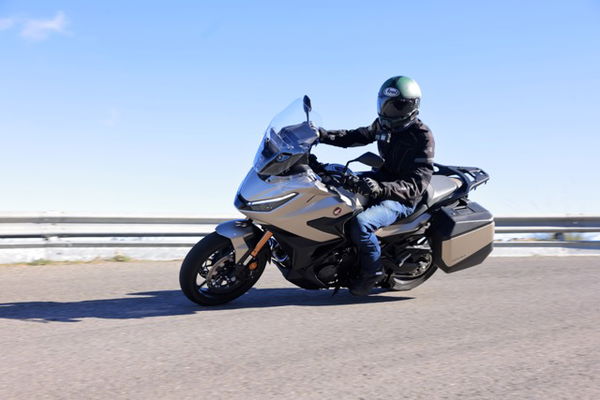Yamaha NMAX 125 Review: UK’s Best-Seller Gets Better (and Cheaper!)
The old NMAX 125 is the UK’s best-selling powered two-wheeler, so how good can the face-lifted, updated 2025 version be?
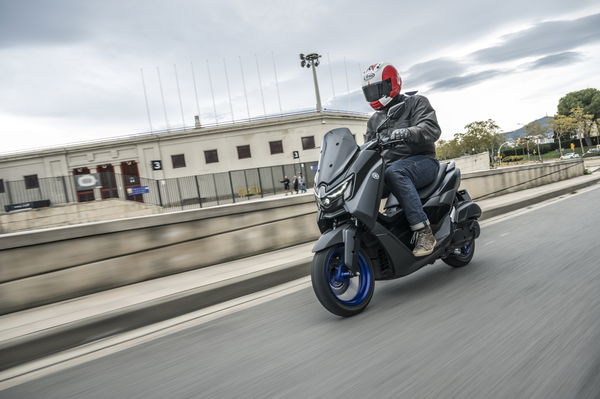
Affordable commuter 125cc scooters might not be the most exciting of powered two-wheelers but there’s no doubting their popularity. If you want affordable, accessible, economical and practical two-wheeled transport their mix of low prices, A1-licence compatibility (so you need only a CBT certificate), 100mpg+ running costs and the combination of near-70mph performance, easy manners and some luggage-carrying ability, means nothing else comes close. Which is why they’re so popular with commuters, delivery riders and first-time bikers and 125 is currently the best-selling ‘motorcycle’ category of all.
Among all commuter 125cc scooters, two machines stand out: the Honda PCX125, which has been a perennial best-seller and has been updated twice since its launch in 2010, and Yamaha’s NMAX 125, first launched in 2014, most recently updated in 2021 and which now gets a further major update for 2025. Both offer a great commuter package with a sporty, premium feel most rivals can’t match. The Yamaha, meanwhile, has so far been 2024’s best-seller, not just in the 125cc class but in UK motorcycling overall.

For 2025, however, both are undergoing big changes. The Honda gets a raft of updates and a new ‘up-specced’ variant, while the Yamaha, which we’re testing here first at its world launch in Barcelona, gets an all-new look, improved features, also a new up-specced variant and, perhaps most impressively of all, is even cheaper than before! So how good is it, really?
Yamaha NMAX 125 price and availability
In this most competitive of classes where economy and value are among the most important of considerations, there’s no denying that the new NMAX gets off to a great start. With the ‘old’ version already a UK best seller at a price of £3,778 the new facelifted, improved version amazingly comes in even cheaper (at least to begin with) at £3,600, which surely makes it a ‘no-brainer’.
On the slight downside, the new NMAX isn’t available in as many colours as before, coming only in a satin black or gloss white, where the outgoing model was available in four – white, blue, red or grey but, I guess, you can’t have everything.
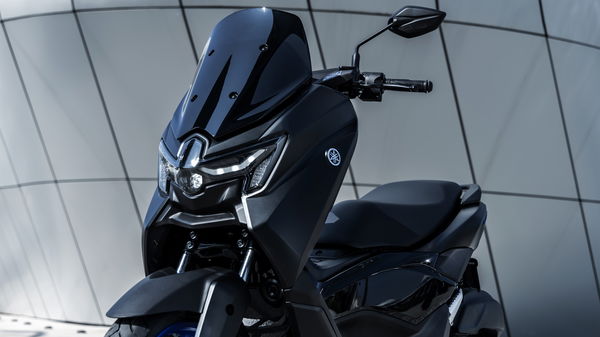
Then, of course, there is also the new ‘Tech Max’ variant. Part of Yamaha’s thinking with the new NMAX was to align it as a more ‘sporty, premium’ machine in the vein of its existing ‘MAX’ scooters – the XMAX 125 and 300 and TMAX 560. So, the newcomer is now part of Yamaha’s ‘Sport scooter’ family, moving from its previous ‘Urban mobility’ classification, and gets a similar, more premium ‘Tech Max’ variant, with an uprated dash, custom seat and bespoke grey or bronze paint for £300 more, or currently £3,900.
Styling and features
The biggest overall update to the 2025 NMAX is its all-new styling. As inspired by the XMAX and TMAX (the word ‘Max’ was bandied around an awful lot by Yamaha personnel at the launch), the new bodywork has the bluff but angular and aggressive look of those two bigger scooters complete with a small sports screen and ‘boomerang’ side panel signature.
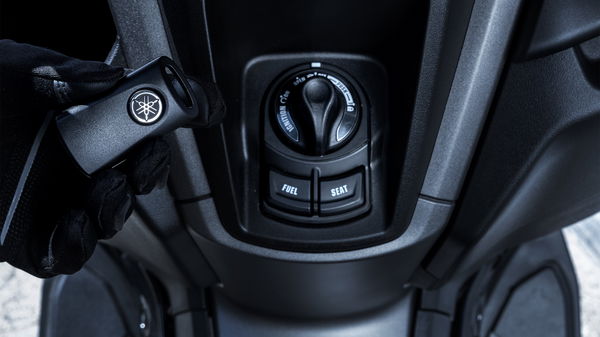
Rounding all of that off is equally new lighting front and rear. The main headlight is now comprised of two, stacked projector beams which remind also of Yamaha’s latest R9 and MT-09. These are then flanked by two new LED riding lights. Two smaller LEDs act as indicators and sit underneath in one neatly integrated overall unit.
Meanwhile, at the rear, it’s a similar story with an all-new integrated LED lighting unit which is both stylish and includes the turn signals.

Elsewhere, instrumentation is taken care of on the base model by a four-inch reversed LCD digital display which supplies virtually all the information you need (although I personally found it a little on the dull side) while by contrast, the Tech Max version gets a combined 3.7inch LCD AND 4.2inch TFT display.
The new NMAX also again has keyless operation which is useful and slick whereby a central control knob lets you switch between on, off, locked and also lets you open the fuel filler and unlock the seat to get to the luggage compartment. And, speaking of luggage, there are two useful cubby holes in the fairing inner, one complete with USB-C charging point, plus, under the hinged seat, a 23.3-litre storage space which is big enough for most urban style helmets although not my XXXL Arai RX-7V.
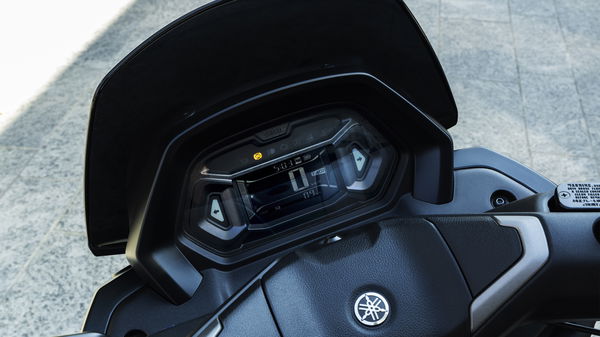
Despite the new bodywork, the new NMAX’s riding position is barely changed in being typical, ‘cute’, sit-up and beg riding position with footboards, fairly narrow flat bars and a small screen. For its intended use as a commuter and round town runabout, it’s fine, if a little ‘dinky’ for my six-foot two-inch frame.
It’s comfy and nimble, light (although 1kg heavier than before) and ridiculously manageable. Its seat height, at 725mm, is actually 5mm taller than before due to slightly longer rear shocks (but you’ll struggle to notice) and if the stubby sport screen is insufficient a taller touring version is available as an optional extra. In fact, over 40 optional accessories are available, many organised into accessory ‘packs’ such as ‘Urban’ (top case, high screen etc), ‘Winter’ (heated grips, apron) and so on.
Engine, chassis and technology
There are fewer changes elsewhere – but then the old NMAX was so good it barely needed them. The liquid-cooled, four-stroke, ‘Blue Core’ single-overhead camshaft single-cylinder unit was already efficient and economical and that hasn’t changed with the slight tweaks required to make it now compliant with Euro5+ (an extra O2 sensor). On top of that, there’s a new crank and other subtle mods to aid longevity.
Peak power and torque are unchanged at 12bhp and 8.2lb-ft respectively There’s a rudimentary traction control system, too, plus the handy ‘stop-start’ function is retained (and can be switched off if you prefer) which helps boost the claimed economy to an impressive 128mpg.
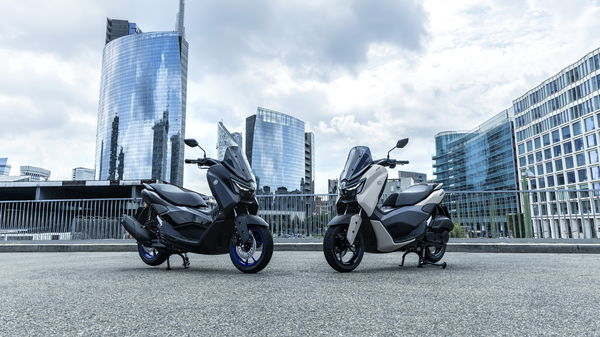
The chassis hasn’t changed that much, either, but, again, with so little wrong with the old version there was little need for it to be. The front forks get new springs along with a tweak to the oil ways, while at the rear, the twin rear shocks are now 5mm longer with the aim of giving a plusher ride (which also explains the 5mm taller seat height) with the right-hand unit now also boasting a hand-adjustable preload adjuster and locking sleeve, where before a C-spanner was required.
What’s it like to ride?
Few powered two-wheelers are as easy and intuitive to ride as a 125 scooter and the NMAX remains a brilliantly effective example of the breed. Just turn the keyless switch to ‘on’, thumb the starter button, flick up the side stand, twist the throttle and away you go.

With 12bhp rather than exploiting to the max the A1 class’s 15bhp regulation, the NMAX’s performance, as before, is adequate and effective without being exactly inspiring, but it’s on par with the rival Honda PCX. There’s enough go to just about keep up with dual carriageway traffic and it’s nippy and effective at lower town speeds (it does labour a little uphill or above 60 – but then that’s typical of most scooters in this class).
Braking is adequate rather than inspiring, too. Both front and rear use a single 230mm disc with a single-piston calliper which, independently, seem a little weak but used together are more than adequate.
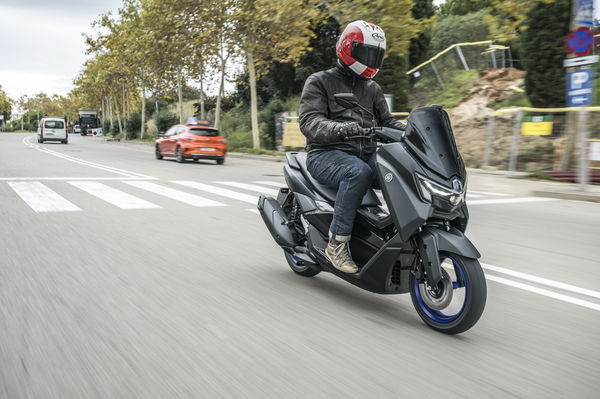
While, handling wise, again the changes are barely noticeable, but also largely unimportant. The ride, unless caught out by bigger potholes or speed bumps, is comfortable, plush and controlled; handling, thanks to its lightweight, dinky proportions and 13-inch wheels, is nimble, easy and sufficiently sporty (although when pushed hard through some mountain hairpins it did start to feel a little ragged and unstable) and, overall, you’ll have no complaints.
Should you buy a 2025 Yamaha NMAX 125?
The old NMAX 125 was already one of the best, most appealing, most practical 125cc scooters available. It was stylish, easy to ride, versatile, had good manners and decent practicality by way of its under-seat storage and so on, and was also temptingly priced. In fact, it was so good all-round it was Britain’s most popular machine.
This new version loses none of that, adds extra style, a few more practical touches (e.g the manually adjustable rear shocks) and actually costs less. And if you want more, there’s also the new Tech Max version. As said before, if you’re after this sort of machine, it’s almost a ‘no-brainer’.
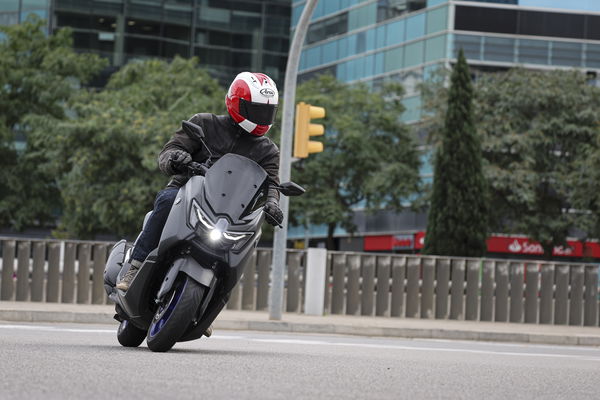
But one final word of warning: As mentioned at the start, the NMAX’s biggest rival, Honda’s PCX125, is also being updated for 2025 and Honda, like Yamaha, is also now offering an upspecced variant. But on this evidence, it’ll have to go some to win its crown back from the NMAX.
